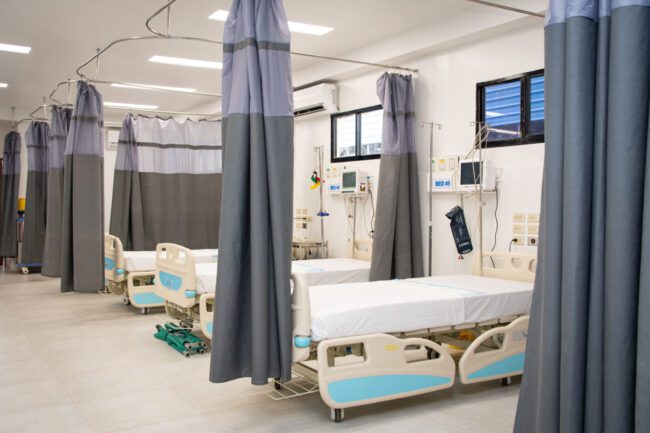Guyana’s Low Carbon Development Strategy (LCDS) 2030 considers the implications of the changing climate on every sector, including public health.
Government’s health policy under its LCDS 2030 was framed with certain learnings in mind. These include that climate change has been shown to increase illness and death from floods, heatwaves, and droughts; water and food insecurity; increased transmission and spread of infectious diseases, diminished air quality; and adverse physical and mental health impacts on populations.
The administration plans to devote significant efforts toward improving both access to and quality of healthcare services.
Guyana to resume national climate resilience strategy this year | OilNOW
Specific focus will be placed on having:
Sufficient numbers of highly-trained medical personnel to service a low carbon economy
Over a dozen specialists were added to the public health system in 2021, across all administrative regions, in areas including emergency medicine, anaesthesiology, paediatrics and dentistry. Government also placed 20 public health graduates in the sector and expect to add a total of 70 this year. The government also planned for 2022 to be the year it trains 40 biomedical technicians to support more effective maintenance of medical equipment across the country.
Guyana plans to use oil revenues to make higher education free | OilNOW
Modern facilities and equipment to facilitate accurate diagnosis, treatment, and care.
In pursuit of this aim, the government set aside GY$16.1 billion in the 2022 budget to modernise and expand public health facilities, an increase from the GY$2.3 billion in the 2021 budget. GY$12.4 was budgeted in 2022 to be used for the design and construction of a state-of-the-art pediatric and maternal hospital, upgrading of the West Demerara and Bartica regional hospitals, and the construction of six modern regional hospitals at Anna Regina, Tuschen, Diamond, Enmore, Bath and No. 75 Village, Corentyne. These new hospitals would catapult healthcare delivery in these areas, reducing the cost and burden of having to be referred to the Georgetown Public Hospital Corporation (GPHC). Also included therein is GY$1 billion for the upgrade of health centres across all administrative regions.
Effective, quality medication that is appropriately stored, delivered and administered in a timely manner
To eliminate incidences of drug shortages by 2023, the government budgeted GY$17.9 billion to procure supplies for the health sector this year. It also mandated urgent reforms in the supply chain management system across the sector including data driven quantification and strengthened procurement systems.
Guyana to use forest conservation funds to build coastal resilience against flooding | OilNOW
Efficient management systems for data and information, storage of records in the event of site destruction or damage due to fires, floods, or other means
In public healthcare, systems must be resilient to natural disasters caused by climate shocks, with back-up mechanisms so critical information is not lost. The government has committed to achieving such resilience.




